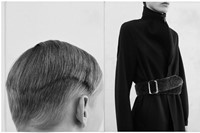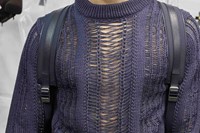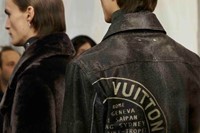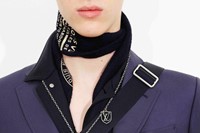While Kim Jones' vision for Louis Vuitton menswear often transports the collection to far-flung destinations (previous seasons have referenced Kenya, northern Tanzania, and Myanmar), for A/W16 he chose to return to Paris, the home of the house founded over a century ago on Rue Neuve des Capucines. "The collection was inspired by Paris past and present," explained Jones after the show, "by the history of Vuitton and the men who have inspired Paris in the past, like Jean Cocteau and Baron de Redé – with a touch of Russia mixed in." "There are so many stories to be told there," continued Alister Mackie, who has been the creative consultant and stylist for Louis Vuitton’s menswear line ever since Jones took the reigns of the house. "Often you're looking far away at this obscure journey but, for me, I go to Paris all the time so it's a familiar story; familiar, and beautiful."
Paris, by way of London
But while the clothes themselves offered all the opulence intrinsic to both Louis Vuitton and Baron de Rede (the legendary aesthete whose parties saw him dubbed the "the Eugène de Rastignac of modern Paris" by his peers, and whose style informed the collection) – they maintained an authenticity and subversion now equally key to the house's codes. While last season was Burma explored by way of Tokyo teenagers and their fetish for Americana, this season was twenties Paris with a thoroughly London edge. There were berets, yes, but rather than the flat Parisian sort, they were those of Ray Petri and the Buffalo collective – an era to which Jones' previous collection was devoted (S/S16 applied the prints of Christopher Nemeth to teddybear coats, and enlisted Judy Blame to create the jewellery). Then, there was the music – a piece of electronica by Bruce Gilbert that Jones had once seen the Michael Clark company dance to ("there was a touch of Nureyev in there, and a bit of Michael Clark off-duty too, I guess!") "And there are the fabulous, Louis Vuitton versions of a Doc Marten which have the monogram inlaid in them," says Mackie. "We're from London and, no matter what, it's always gonna have a bit of British attitude. I think that's what makes it work."
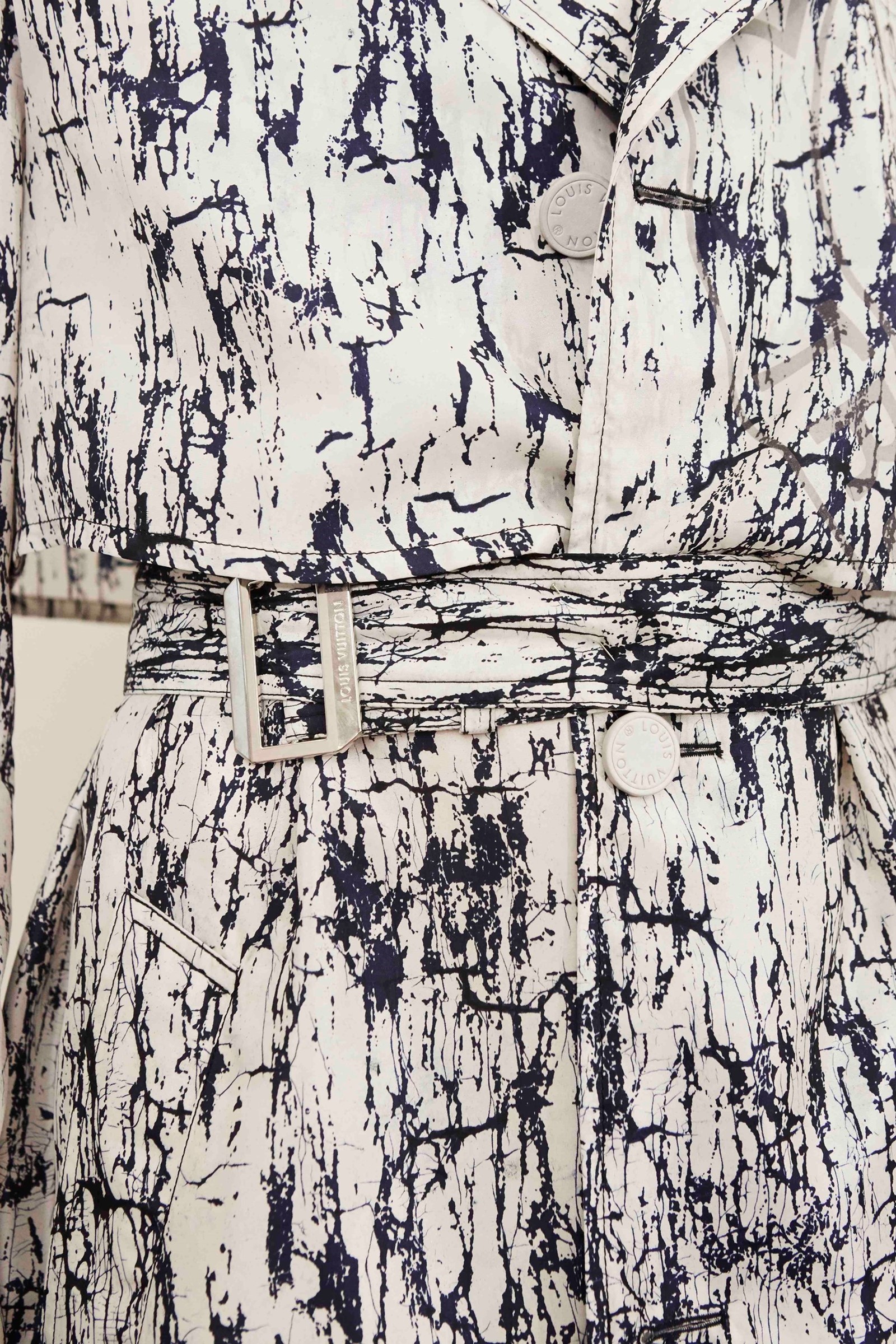
Optimum Brilliance
Though there was an undercurrent of London-centric subculture present in the collection, it was rendered through the deft craftsmanship that Louis Vuitton is renowned for. From cashmere-fused silk as light as a feather; to the use of Roketsu (an ancient technique native to Kyoto, which uses wax and indigo dye to achieve a crackled effect) to decorate denim; and mobile bars made-to-order in Vuitton's Asnières workshop (the "historic heart of Louis Vuitton," where Vuitton himself moved the business in 1859) – even zips were a new development in technology, their metal teeth attached directly to leather. Shinji Ohmaki, a Japanese artist, created an installation of stainless steel which undulated above the audience – and the most precise orchestration afforded it optimum brilliance; the show was re-scheduled from its ordinary 2.30pm timeslot in order for it to take place at sunset (an impressive feat of organisation familiar only to those who understand the bizarre nuances of the fashion calendar).
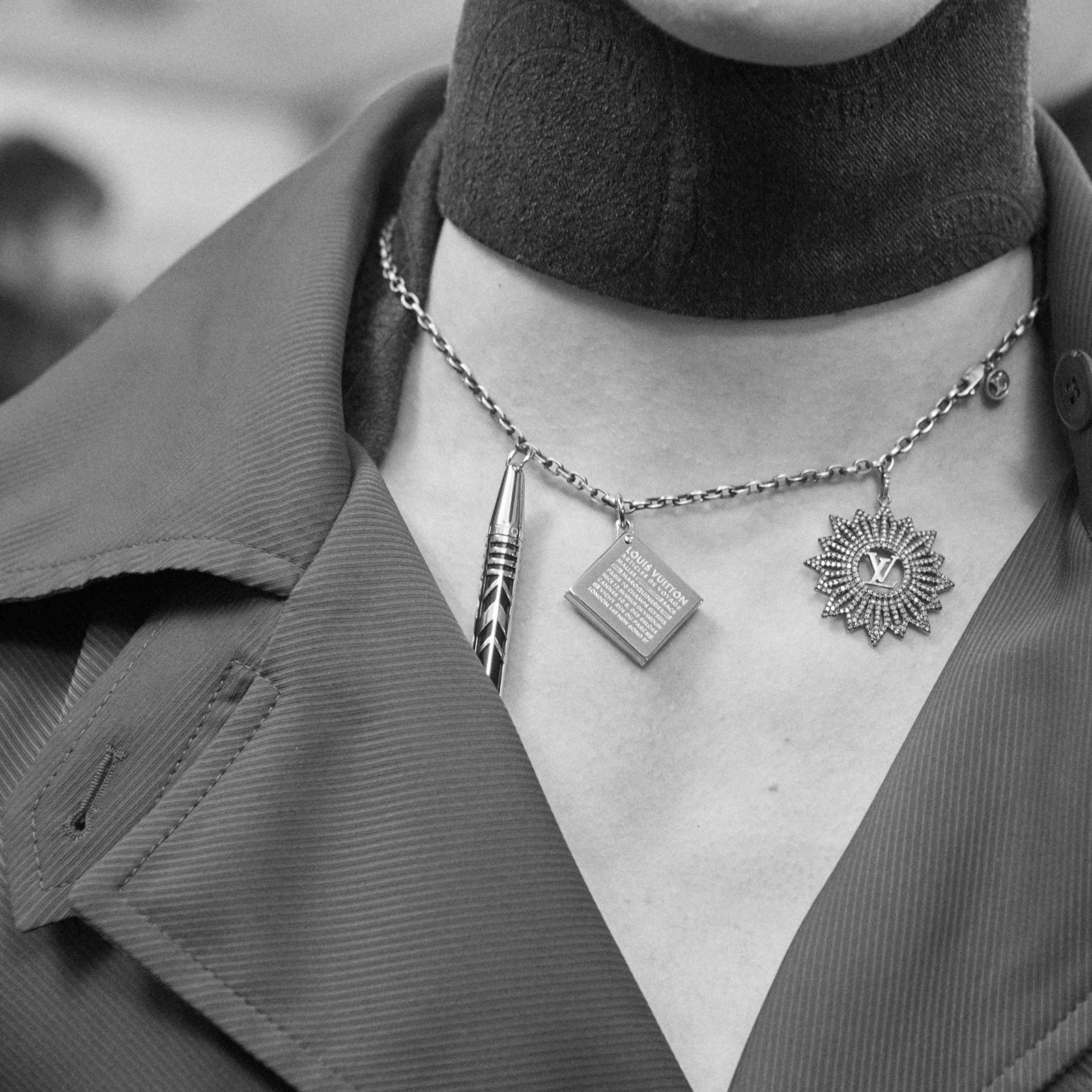
Eclectic Adornments
While Baron de Redé wore cameos with the faces of the Rolling Stones on them (he was their financial advisor), Kim Jones collaborated with Stones heir Jade Jagger to create their own version of heirlooms. Silver brooches were encrusted with diamonds forming the LV logo and were attached to scarves and lapels, while necklaces dangling with exquisitely-rendered charms became, in Mackie's words, "ornate military dog tags... there were pens and whistles and little crests and vessels to hold things attached to them." Standing in contrast against the utilitarian shapes of military jackets, there was an incredible delicacy to the pieces – but one that also gave the berets they were pinned to a distinctly Soviet feeling, while the neck-scarves they were attached to were tightly pinned, almost asphyxiating. "I have been working at Vuitton for five years," said Jones, "I wanted to do something that could give me an axis to make a shift for the next chapter."

